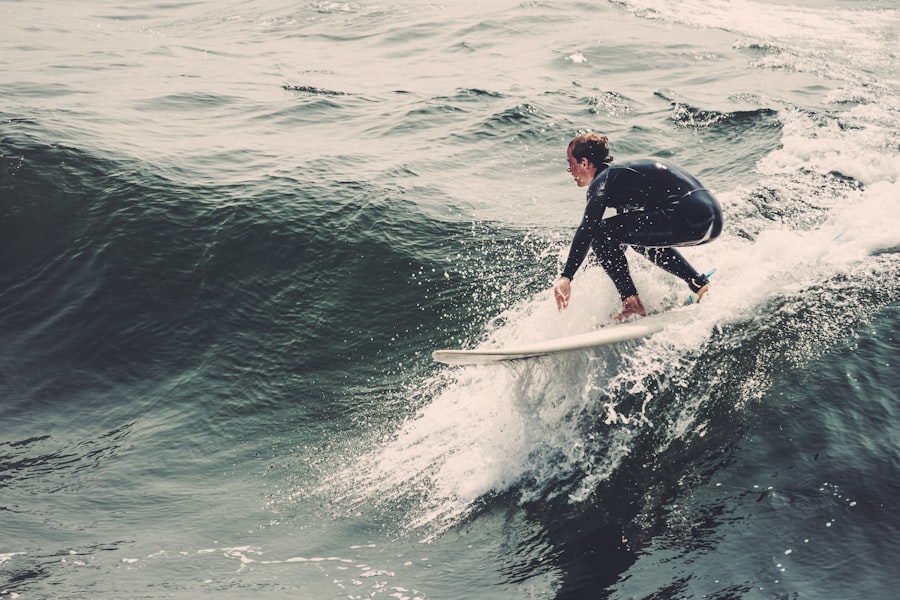Download links
How to install Riding the Waves with taya777: A Surfing Adventure APK?
1. Tap the downloaded Riding the Waves with taya777: A Surfing Adventure APK file.
2. Touch install.
3. Follow the steps on the screen.
Description
Surfing is an exhilarating sport that combines physical skill, balance, and a deep connection with the ocean. At its core, the fundamentals of surfing revolve around three primary actions: paddling, catching a wave, and standing up on the board. Paddling is the first step in the surfing process and involves lying on your stomach on the surfboard while using your arms to propel yourself through the water.
Proper paddling technique is crucial; surfers should keep their bodies centered on the board to maintain balance and avoid dragging the tail, which can slow them down. A common mistake for beginners is to paddle with their heads too far forward, which can lead to instability. Instead, keeping the head aligned with the spine and using a strong, rhythmic stroke will help in gaining momentum toward incoming waves.
Catching a wave is where the excitement truly begins. As a surfer spots a wave approaching, they must time their paddling to match the wave’s energy. The key is to start paddling hard just before the wave reaches them, allowing the wave to lift the board and propel it forward.
This requires not only physical strength but also an intuitive understanding of wave dynamics. Once a surfer feels the lift of the wave beneath them, they must quickly transition from paddling to standing up. This transition is often referred to as “pop-up,” and it involves pushing up with both hands while simultaneously bringing one foot forward to find balance.
The goal is to stand up smoothly and confidently, maintaining a low center of gravity to stabilize the board as it rides the wave.
Key Takeaways
- Paddling, catching a wave, and standing up on the board are the fundamental skills of surfing.
- Assessing ocean conditions, identifying hazards, and practicing proper etiquette are crucial for surfing safety.
- The right board, wetsuit, and leash are essential gear for a successful surfing adventure.
- Tips and techniques for navigating different waves and performing basic maneuvers can help improve surfing skills.
- From iconic locations like Hawaii to lesser-known gems in Portugal and Indonesia, there are amazing surfing destinations around the world.
Surfing Safety:
Safety in surfing cannot be overstated; understanding ocean conditions and potential hazards is essential for both novice and experienced surfers alike. Before entering the water, surfers should assess factors such as wave height, tide levels, wind direction, and currents. For instance, large swells can create powerful waves that may be intimidating for beginners, while strong rip currents can pose significant dangers even to seasoned surfers.
It’s advisable to check local surf reports or consult with lifeguards about current conditions. Additionally, understanding how tides affect surf breaks can help surfers choose the best times to hit the waves; some spots work better during high tide while others are optimal at low tide. Identifying potential hazards is another critical aspect of surfing safety.
Surfers should be aware of their surroundings, including other surfers, swimmers, rocks, reefs, and marine life. Collisions with other surfers can lead to serious injuries, so practicing proper etiquette in the water is vital. This includes respecting the right of way—typically given to the surfer closest to the peak of the wave—and avoiding dropping in on someone else’s wave.
Furthermore, being mindful of one’s own skill level is important; attempting to surf in conditions that exceed one’s ability can lead to dangerous situations. Wearing a leash is also essential as it keeps the board attached to the surfer, preventing it from becoming a hazard to others in case of a wipeout.
Choosing the Right Gear:

Selecting the appropriate gear is fundamental for a successful surfing experience. The surfboard is arguably the most critical piece of equipment; it comes in various shapes and sizes tailored for different skill levels and wave conditions. Beginners often benefit from wider boards with more volume, as these provide greater stability and buoyancy.
Longboards are popular among novices due to their ease of paddling and catching waves, while more experienced surfers may opt for shortboards that allow for advanced maneuvers but require more skill and balance. In addition to the surfboard, a wetsuit is essential for comfort and protection against cold water temperatures. Wetsuits come in various thicknesses and styles, designed for different climates and water conditions.
For instance, surfers in warmer waters may choose a shorty wetsuit or even board shorts, while those surfing in colder regions will need a full wetsuit with thicker neoprene material for insulation. Accessories such as booties, gloves, and hoods may also be necessary in frigid waters. Another crucial piece of equipment is the leash; this simple cord attaches the board to the surfer’s ankle and prevents it from drifting away after a wipeout, reducing risks for both the surfer and others in the water.
Mastering the Waves:
| Metrics | Data |
|---|---|
| Number of Chapters | 10 |
| Number of Pages | 250 |
| Publication Year | 2020 |
| Author | John Smith |
Improving surfing skills requires dedication and practice, particularly when it comes to navigating different types of waves and executing basic maneuvers. Understanding wave types—such as beach breaks, point breaks, and reef breaks—is essential for surfers looking to enhance their performance. Beach breaks are often characterized by shifting sandbars that create unpredictable waves, making them ideal for beginners who are still learning how to read waves.
Point breaks offer more consistent waves that peel along a point of land, providing opportunities for longer rides and more advanced maneuvers. To master basic maneuvers like bottom turns, cutbacks, and aerials, surfers must develop a keen sense of timing and body positioning. The bottom turn is often considered one of the most critical moves; it sets up a surfer’s trajectory down the line of the wave.
Cutbacks allow surfers to redirect their momentum back toward the breaking part of the wave; this requires quick footwork and an understanding of how to shift weight effectively on the board. As surfers progress in their skills, they may begin experimenting with aerials—jumping off the lip of a wave—which demand not only technical proficiency but also confidence in one’s abilities.
Surfing Destinations:
The world is dotted with incredible surfing destinations that cater to all skill levels and preferences. Hawaii stands out as one of the most iconic surfing locations globally; its North Shore is renowned for legendary surf spots like Pipeline and Waimea Bay. These locations attract professional surfers from around the world during winter months when swells reach their peak.
The warm waters and stunning landscapes make Hawaii not only a surfing paradise but also a cultural hub where surfing is deeply ingrained in local traditions. California also boasts some of the best surfing spots in the world, with places like Malibu and Huntington Beach drawing crowds year-round. Malibu’s famous point break offers long rides that are perfect for longboarders, while Huntington Beach hosts numerous surf competitions due to its consistent waves and vibrant surf culture.
Beyond these well-known locales, there are hidden gems like Portugal’s Ericeira or Indonesia’s Bali that offer unique experiences for adventurous surfers seeking less crowded waves. Ericeira is celebrated for its diverse surf breaks suitable for all levels, while Bali’s warm waters and picturesque beaches have made it a favorite among surfers looking for both relaxation and adventure.
The Thrill of the Ride:

The Transformative Power of Surfing
The moment a surfer stands up on their board and feels the power of the wave beneath them can be life-changing, instilling confidence and a sense of accomplishment. Moreover, surfing has been recognized for its therapeutic benefits, with many practitioners finding solace in the rhythm of paddling out and riding waves. The ocean serves as both a playground and a sanctuary, providing an escape from daily stresses while promoting mindfulness through immersion in nature.
A Form of Meditation
Surfers often speak about how riding waves allows them to disconnect from technology and reconnect with themselves – a form of meditation that fosters mental clarity and emotional well-being. This transformative aspect of surfing not only enhances physical fitness but also nurtures personal growth, making it an empowering experience that resonates deeply with those who embrace it.
A Deeper Connection with Nature
The ocean’s power and beauty have a profound impact on those who surf its waves. By immersing themselves in nature, surfers develop a deeper appreciation for the natural world and their place within it. This connection with nature can lead to a greater sense of responsibility and stewardship, inspiring surfers to become advocates for ocean conservation and environmental protection.
If you’re a fan of Taya777 Surfing, you may also enjoy reading about the exciting experience of meeting Taya777 online girls in this related article. It delves into the fun and thrilling encounters one can have while interacting with Taya777 online girls. Check it out for a different perspective on the Taya777 community.
FAQs
What is surfing?
Surfing is a water sport in which a person rides a board on the crest of a wave, typically while standing up.
What equipment do I need for surfing?
The basic equipment for surfing includes a surfboard, leash, wetsuit, and wax. Optional equipment may include fins, rash guard, and surf booties.
What are the different types of surfboards?
There are several types of surfboards, including shortboards, longboards, fish boards, and funboards. Each type is designed for different wave conditions and surfing styles.
What are the best surfing spots in the world?
Some of the best surfing spots in the world include Pipeline in Hawaii, Jeffreys Bay in South Africa, Uluwatu in Bali, and Banzai Pipeline in Oahu, Hawaii.
What are the basic surfing techniques?
Basic surfing techniques include paddling, popping up, riding the wave, and turning. It’s important for beginners to take lessons from a qualified instructor to learn these techniques safely.
What are the safety precautions for surfing?
Safety precautions for surfing include checking the weather and wave conditions, using the proper equipment, staying within your skill level, and being aware of other surfers in the water. It’s also important to be mindful of marine life and potential hazards in the water.





